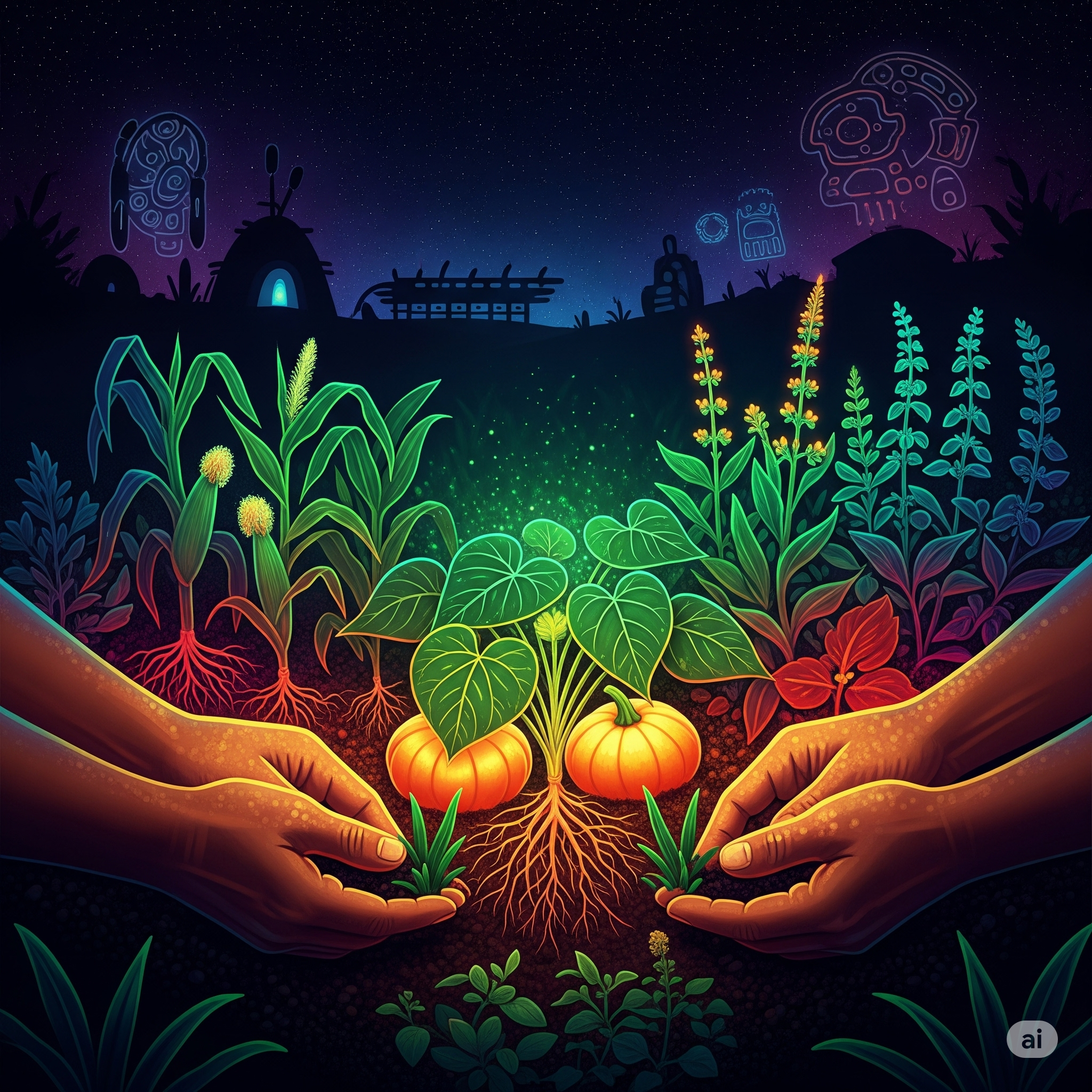Introduction
The agriculture sector is the backbone of many economies around the world, particularly in developing nations. However, despite its importance, farmers in many regions often face challenges such as price volatility, market access issues, and inefficient supply chain systems. These challenges can result in low incomes, wastage of produce, and even farmers abandoning agriculture due to poor financial returns.
In recent years, digital platforms for farmers have emerged as a powerful tool to address these issues. These platforms leverage information technology, big data, and mobile connectivity to create more efficient, transparent, and accessible agricultural markets. From connecting farmers with buyers directly to providing access to resources like market prices, weather forecasts, and expert agricultural advice, digital platforms have the potential to transform how farmers operate and participate in the agricultural economy.
1. What Are Digital Platforms for Farmers?
Digital platforms for farmers are online tools, mobile applications, and websites that help farmers access markets, information, and services in a more efficient and cost-effective manner. These platforms serve as intermediaries between farmers and buyers, eliminating traditional market barriers such as middlemen, market inefficiencies, and asymmetry of information.
Some key features of these platforms include:
- Market Access: Direct access to local and international markets for buying and selling produce.
- Information Services: Providing real-time information on market prices, weather forecasts, crop disease management, and agronomic advice.
- Financial Services: Offering access to digital payments, credit facilities, and insurance tailored for farmers.
- Supply Chain Optimization: Facilitating the movement of goods from farm to market with a focus on reducing losses and improving traceability.
- Knowledge Sharing: Providing platforms for farmers to share experiences, innovations, and farming practices through online communities.
Digital platforms bridge the gap between traditional agriculture and modern technology, enabling farmers to improve their productivity, reduce costs, and increase their income potential.
2. Benefits of Digital Platforms for Farmers
a) Improved Market Access
One of the most significant advantages of digital platforms is that they help farmers gain direct access to buyers, thus eliminating the role of intermediaries. Traditionally, farmers relied on local markets or middlemen who often exploited them by offering low prices and charging high commission rates. Digital platforms provide a transparent marketplace where farmers can sell their produce directly to wholesalers, retailers, and consumers.
This access not only improves profitability for farmers but also allows them to expand their reach to a wider range of buyers, even from different regions or countries. This is especially beneficial for farmers who previously had limited access to larger markets.
b) Real-Time Market Information
In traditional markets, farmers often face the problem of price volatility due to the lack of access to current market prices. With digital platforms, farmers can access real-time price data on their crops, allowing them to make informed decisions about when to sell. This ability to monitor price fluctuations helps farmers avoid selling their produce at a loss during low-demand seasons.
Additionally, digital platforms provide market trends, demand forecasts, and production costs, helping farmers strategize their farming practices and understand the broader agricultural economy.
c) Financial Inclusion
Access to financial services has always been a challenge for smallholder farmers, especially in rural areas. Digital platforms provide farmers with access to digital payments, micro-loans, and crop insurance that were previously out of their reach.
Through mobile banking, farmers can receive payments directly into their accounts, reducing the risks associated with cash transactions. Moreover, fintech solutions integrated into digital platforms offer low-interest loans to farmers for purchasing inputs like seeds, fertilizers, and equipment. These platforms also offer insurance products to protect farmers against natural disasters, crop failure, or market price drops, helping mitigate financial risks.
d) Access to Agricultural Advice and Education
Many farmers, especially in remote areas, lack access to professional agricultural advice and training. Digital platforms can provide farmers with access to expert guidance on best practices, pest management, and disease prevention. These platforms offer a wide range of information through online tutorials, video content, and chatbot services that guide farmers on optimizing their yields and reducing costs.
Moreover, farmers can engage in peer-to-peer knowledge exchange through online forums, where they can share insights and experiences with other farmers, agricultural experts, and researchers.
e) Efficient Supply Chain Management
The agricultural supply chain is often long, complex, and inefficient, leading to significant food waste and delays. Digital platforms can streamline the supply chain by tracking produce from the farm to the consumer. Supply chain optimization tools on these platforms can help with the logistics of transporting produce, minimizing delays and spoilage during transport.
By using real-time tracking and data analytics, these platforms ensure that produce reaches the right market at the right time, reducing waste and enhancing traceability. Additionally, farmers can track inventory and monitor transportation costs, allowing for better financial planning and reducing the risk of overproduction.
f) Climate-Smart Agriculture and Sustainability
Digital platforms can also contribute to making farming more climate-resilient and sustainable. By providing access to weather forecasts, drought monitoring systems, and climate data, these platforms enable farmers to make timely decisions about planting, irrigation, and harvesting based on real-time climatic conditions.
Furthermore, these platforms encourage sustainable farming practices, such as precision farming and resource optimization, by providing farmers with insights into fertilizer usage, water management, and crop rotation.
3. Types of Digital Platforms for Farmers
Several types of digital platforms cater to different needs within the agricultural sector. The main types include:
a) Marketplaces for Buying and Selling Produce
These platforms connect farmers directly with buyers and consumers. Examples include Agri marketplaces such as Ninjacart and Fasal, which help farmers sell their produce at better prices without the intervention of middlemen. These platforms typically facilitate bulk buying, auction-style pricing, and direct sales.
b) Information and Advisory Platforms
Platforms like Kisan Network or Agri App provide real-time agricultural advice to farmers, helping them with crop management, disease control, and soil health. They also offer weather alerts, market price information, and pest control measures.
c) Financial Services Platforms
These platforms offer digital payment solutions, micro-loans, and insurance products tailored to farmers. FARMERS FIRST and Paytm for Business are examples of platforms that provide financial services, including mobile banking, to rural farmers.
d) Farm Management Platforms
Farm management platforms like Agri-Tech or RuralShores assist farmers in planning, tracking, and optimizing farm operations. These platforms allow farmers to monitor field activities, input usage, and yield predictions in real-time.
e) Aggregators for Inputs and Resources
These platforms offer seeds, fertilizers, and other agricultural inputs in bulk to farmers at competitive prices. Examples include Bhoomi, which connects farmers with agricultural input suppliers, ensuring access to the right products at the right time.
4. Case Studies of Successful Digital Platforms for Farmers
a) e-Choupal (India)
e-Choupal, one of India’s most well-known agricultural digital platforms, has revolutionized the way Indian farmers access information and markets. The platform connects farmers with global markets and provides real-time weather updates, market prices, and agricultural advice through an interactive interface. By creating a network of village-level computers equipped with internet access, e-Choupal has empowered farmers to access market opportunities and empowered them to make better business decisions.
b) M-Farm (Kenya)
M-Farm, a Kenyan-based platform, allows farmers to digitally access market prices, connect with suppliers, and join farming cooperatives to get better rates for their produce. This platform also provides real-time updates on weather, enabling farmers to make informed decisions about planting and harvesting. It has helped farmers by improving their market access and income generation.
c) AgroStar (India)
AgroStar is a technology-driven agribusiness platform that connects farmers with agricultural inputs like fertilizers, pesticides, and seeds. AgroStar uses data analytics to suggest the most suitable products to farmers based on soil type, weather conditions, and crop needs. The platform also offers expert advisory services, helping farmers reduce wastage and increase productivity.
5. Challenges and Future of Digital Platforms for Farmers
a) Internet Connectivity and Infrastructure
A significant barrier to the adoption of digital platforms for farmers is poor internet connectivity in rural areas. Despite the increasing use of mobile phones in rural areas, many farmers still face challenges related to poor internet infrastructure.
b) Digital Literacy
Another challenge is the digital literacy gap among farmers, especially older farmers who may be unfamiliar with using smartphones and digital platforms. Providing training and support is essential to overcome this hurdle.
c) Data Privacy Concerns
With the increasing use of digital platforms, data privacy and protection are becoming significant concerns. Farmers need to trust that their data will be handled securely and that their personal information won’t be misused.
d) Government Support and Regulation
For these platforms to succeed on a large scale, government support in the form of subsidies, incentives, and regulations is crucial. Governments must ensure that digital platforms adhere to standards that protect farmers’ interests.
e) Future Prospects
The future of digital platforms for farmers looks promising. With advancements in AI, IoT, and blockchain technology, digital platforms will continue to evolve and provide even more sophisticated services to farmers. The integration of blockchain for traceability and AI for predictive analytics will further enhance the capabilities of these platforms.
Conclusion
Digital platforms for farmers are transforming the agricultural sector by enhancing market access, providing valuable information, and offering financial services. These platforms are addressing long-standing challenges faced by farmers and have the potential to significantly improve productivity, income, and sustainability in the agricultural industry.
As technology continues to evolve, digital platforms will become even more integrated into the fabric of agricultural systems worldwide, empowering farmers and improving food security for generations to come.




